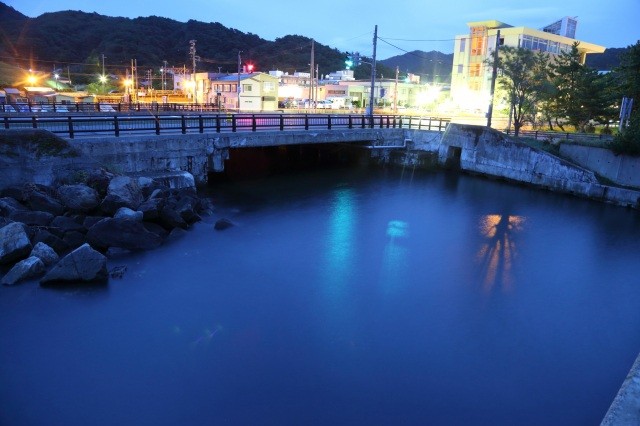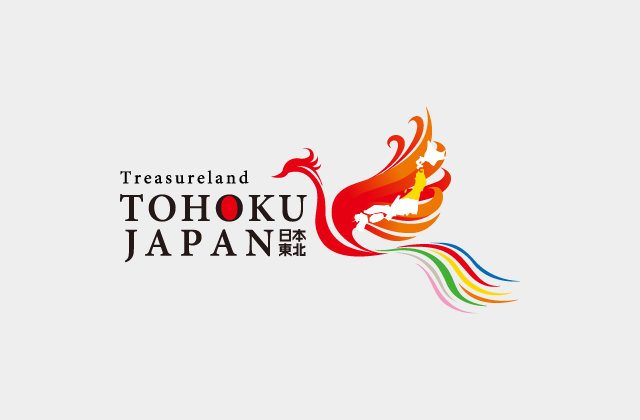Historical and cultural tour of the Jomon and Heian periods (2 days)

Historical and cultural tour of the Jomon and Heian periods (2 days)
START
Day1
Special History Site Sannai Maruyama Ruins

The Sannai-Maruyama Site is one of Japan's largest early to middle Jomon Period sites. The site was designated as a Special Historic Site by the national government in November 2000. In July 2021, the "Jomon Monuments of Hokkaido and the Northeast" including the Sannai-Maruyama Site were registered as a World Heritage Site.At the Jomon Jiyukan, excavated artifacts are displayed in the permanent exhibition room "SANMARU MUSEUM," a Jomon Theater shows films introducing the ruins, and a hands-on workshop allows visitors to experience making things (for details, see "Sannai-Maruyama Site Hands-on Workshop"). The Jomon Theater shows a video introducing the ruins.Volunteer guides are also available to show visitors around the ruins.
Asamushi Onsen
Enjoy stunning sunset views at this hot spring resort on Mutsu Bay!

The scenic local “Aoimori Railway” line connects Aomori and the hot spring town of Asamushi Onsen. The free foot bath outside Asamushi Onsen station welcomes visitors with an exhilarating introduction to their Onsen experience. The Onsen town consists of two areas: the east side is a traditional hot spring town while the west side is a beach resort facing the sea.
With its narrow alleys lined with traditional hot spring inns and eateries, the eastern part of town displays the unchanged scenery of the old hot spring town. Here visitors can poach their own eggs in the hot spring waters at the “Onsen egg place” and the nearby drinking fountain is said to be beneficial for digestion. Other attractions on the east side are Asamushi Onsen Forest Park, recognised as one of Japan’s best 100 forest bathing locations and Asamushi Aquarium known for its popular dolphin performances.
Ocean lovers can enjoy bathing, windsurfing, yachting and fishing at the artificial sandy beach “Sunset Beach Asamushi” on the west side of town. The nearby Michi-no-Eki “Yusa Asamushi” is a roadside station offering a large hot spring bath with a panoramic view of Mutsu Bay. The luxury hotels lined along the Mutsu Bay coast offer popular modern hot spring resort experiences, the perfect place to enjoy a spectacular sunset view!
The clear hot spring water is pure, odourless, smooth to touch and moisturising on the skin. Along with promoting beautiful skin, the water is said to be beneficial for neuralgia, rheumatism, backache and a range of other ailments.
With its narrow alleys lined with traditional hot spring inns and eateries, the eastern part of town displays the unchanged scenery of the old hot spring town. Here visitors can poach their own eggs in the hot spring waters at the “Onsen egg place” and the nearby drinking fountain is said to be beneficial for digestion. Other attractions on the east side are Asamushi Onsen Forest Park, recognised as one of Japan’s best 100 forest bathing locations and Asamushi Aquarium known for its popular dolphin performances.
Ocean lovers can enjoy bathing, windsurfing, yachting and fishing at the artificial sandy beach “Sunset Beach Asamushi” on the west side of town. The nearby Michi-no-Eki “Yusa Asamushi” is a roadside station offering a large hot spring bath with a panoramic view of Mutsu Bay. The luxury hotels lined along the Mutsu Bay coast offer popular modern hot spring resort experiences, the perfect place to enjoy a spectacular sunset view!
The clear hot spring water is pure, odourless, smooth to touch and moisturising on the skin. Along with promoting beautiful skin, the water is said to be beneficial for neuralgia, rheumatism, backache and a range of other ailments.
Day2
Lunch at around JR Ichinoseki station
Ichinoseki’s Historic Mochi Cuisine

Ichinoseki city in Iwate and the surrounding area has a long history of Mochi (sticky rice cake) thanks to the region’s crops of excellent sticky rice. The locals say that over 300 varieties of Mochi dishes are available in the region including “Mochi Honzen” dating back to the Edo period when the Date clan ruled the region. Honzen cuisine is a formal meal served on a personal tray and “Mochi Honzen” is a multi-course meal with a variety of Mochi dishes prepared in a ritualised style. A wide range of Mochi dishes are available including sweets, savoury side dishes and fusion dishes combining Mochi with international cuisine.
Search Restaurants
Search Restaurants
Motsuji Temple
Free your mind in this temple’s peaceful garden known as Buddha’s Paradise

Motsuji Temple is a designated UNESCO World Cultural Heritage Site along with nearby Chusonji Temple in Hiraizumi. The beautiful Japanese garden and ancient religious buildings are officially recognised both as a historic site and as a place of exceptional scenic beauty.
The priest Ennin originally founded the temple and the construction of the temple complex was done during the 2nd and 3rd generations of Oshu Fujiwara clan.
The beautiful Japanese garden representing Buddha’s Paradise is breath-taking. Visitors can enjoy the Pure Land Garden, a popular garden style of the Heian period with its unique landscape design techniques, surrounding the central Oizumi-ga-ike pond.
The peaceful garden fascinates visitors with its beautiful seasonal flowers and is the perfect place to escape from the hustle and bustle of everyday life. Many people come here during the Iris Festival in early summer and the “Hagi” Japanese Bush Clover Festival in early autumn. For those wanting a deeper Buddhist experience, the temple offers Zen meditation sessions and Buddhist sutra transcription courses introducing participants to Japanese Buddhism.
Thanks to the flat nature of the location the temple is easily accessible. Lifts and accessible toilets are available in the temple buildings for the seniors and families with children.
A thematic journey in the Tohoku region:Okuno Hosomichi・The History of Michinoku
The priest Ennin originally founded the temple and the construction of the temple complex was done during the 2nd and 3rd generations of Oshu Fujiwara clan.
The beautiful Japanese garden representing Buddha’s Paradise is breath-taking. Visitors can enjoy the Pure Land Garden, a popular garden style of the Heian period with its unique landscape design techniques, surrounding the central Oizumi-ga-ike pond.
The peaceful garden fascinates visitors with its beautiful seasonal flowers and is the perfect place to escape from the hustle and bustle of everyday life. Many people come here during the Iris Festival in early summer and the “Hagi” Japanese Bush Clover Festival in early autumn. For those wanting a deeper Buddhist experience, the temple offers Zen meditation sessions and Buddhist sutra transcription courses introducing participants to Japanese Buddhism.
Thanks to the flat nature of the location the temple is easily accessible. Lifts and accessible toilets are available in the temple buildings for the seniors and families with children.
A thematic journey in the Tohoku region:Okuno Hosomichi・The History of Michinoku
Chuson-ji Temple
A World Heritage temple complex featuring a dazzling golden hall

The "Cultural Heritage of Hiraizumi" was registered as a World Heritage Site in 2011. Chuson-ji Temple is famous for its gorgeous golden Konjikido (Konjikido), but there is much more to see, including Benkei-do, Yakushido, and the main hall!
Chuson-ji was founded in 850 by the great priest Jikaku Daishi Ennin, and in the early 12th century, Kiyohira, the first generation of the Oshu Fujiwara clan, began the construction of a large hall and pagoda. Kiyohira, who had lost his family in the war, is said to have expressed his wish for a peaceful ideal society based on the teachings of Buddha. Hiraizumi prospered as a gold-producing area, and Motohira the second, followed by Hidehira the third, flourished for nearly 100 years until Yasuhira the fourth was destroyed by the Minamoto clan. Konjikido, National Treasure No. 1, is the culmination of the craftsmanship of the time, including mother-of-pearl inlay, openwork carving, and lacquer maki-e. The "Sankozo" houses Buddhist statues and other valuable cultural assets. As a treasure house of Buddhist art representative of eastern Japan, the museum preserves the history and prosperity of the Oshu Fujiwara clan.
The temple is also attractive for its seasonal changes in appearance: cherry blossoms in spring, fresh greenery in summer, autumn leaves in fall, snow in winter, and the building and its natural surroundings.
Chuson-ji was founded in 850 by the great priest Jikaku Daishi Ennin, and in the early 12th century, Kiyohira, the first generation of the Oshu Fujiwara clan, began the construction of a large hall and pagoda. Kiyohira, who had lost his family in the war, is said to have expressed his wish for a peaceful ideal society based on the teachings of Buddha. Hiraizumi prospered as a gold-producing area, and Motohira the second, followed by Hidehira the third, flourished for nearly 100 years until Yasuhira the fourth was destroyed by the Minamoto clan. Konjikido, National Treasure No. 1, is the culmination of the craftsmanship of the time, including mother-of-pearl inlay, openwork carving, and lacquer maki-e. The "Sankozo" houses Buddhist statues and other valuable cultural assets. As a treasure house of Buddhist art representative of eastern Japan, the museum preserves the history and prosperity of the Oshu Fujiwara clan.
The temple is also attractive for its seasonal changes in appearance: cherry blossoms in spring, fresh greenery in summer, autumn leaves in fall, snow in winter, and the building and its natural surroundings.
GOAL
